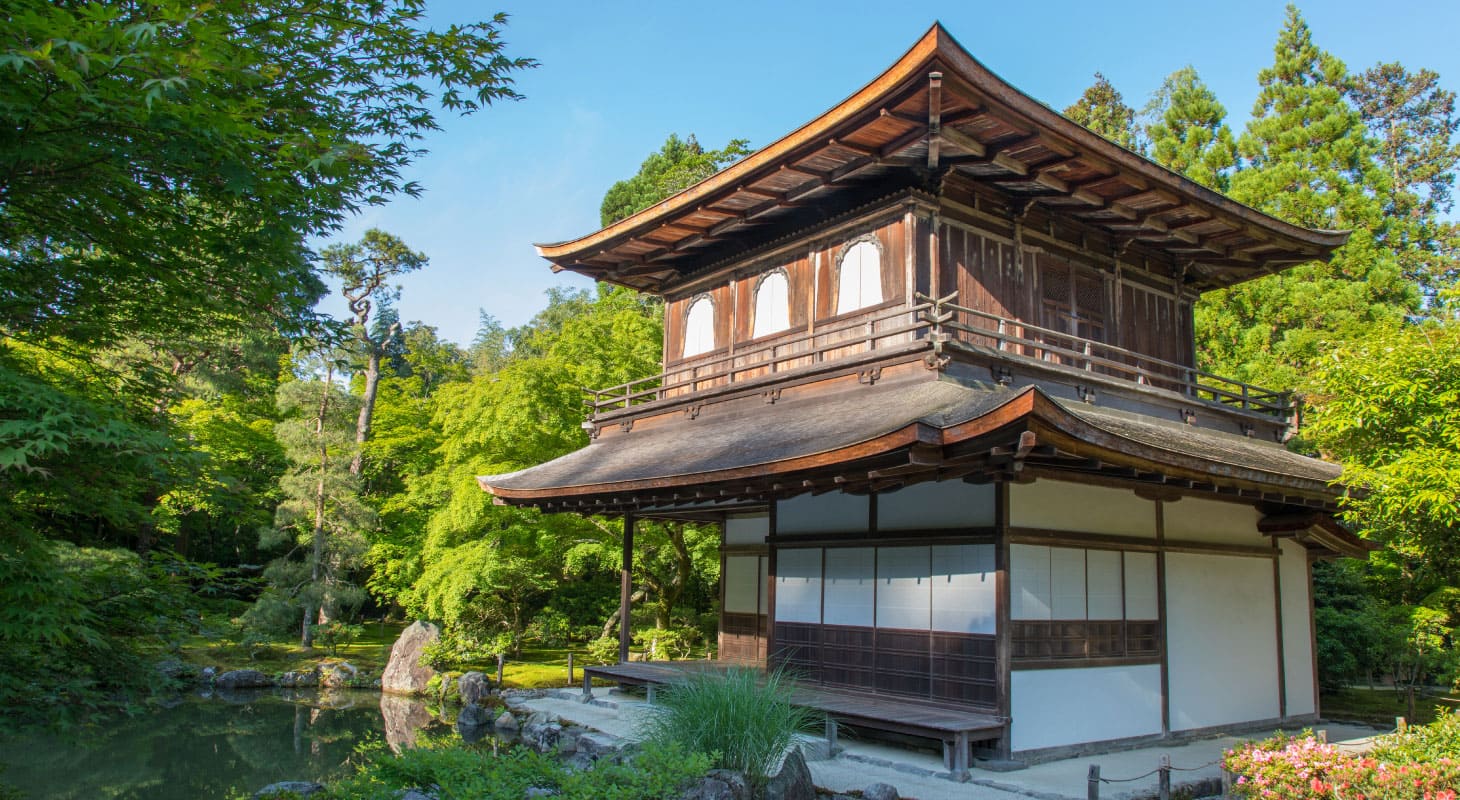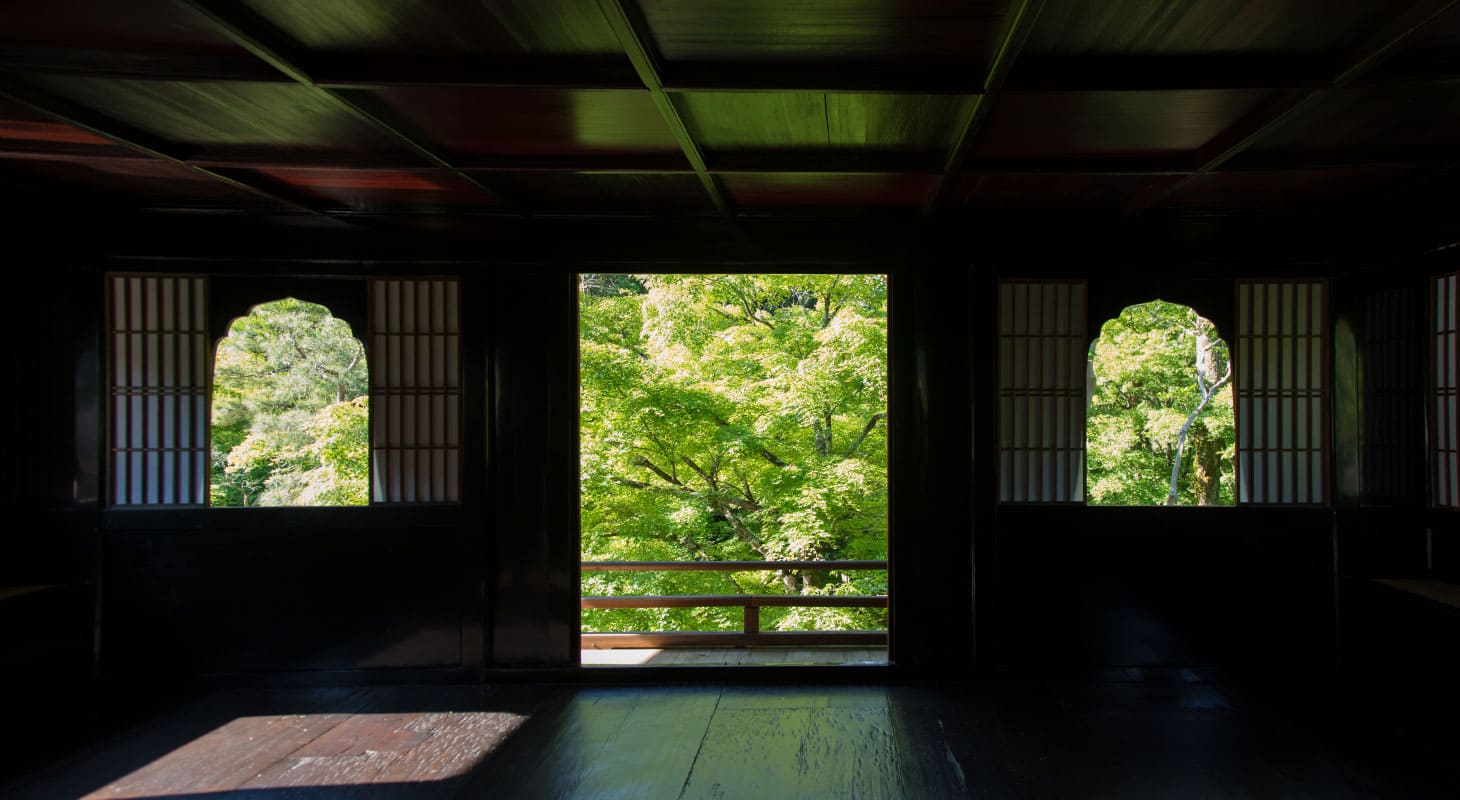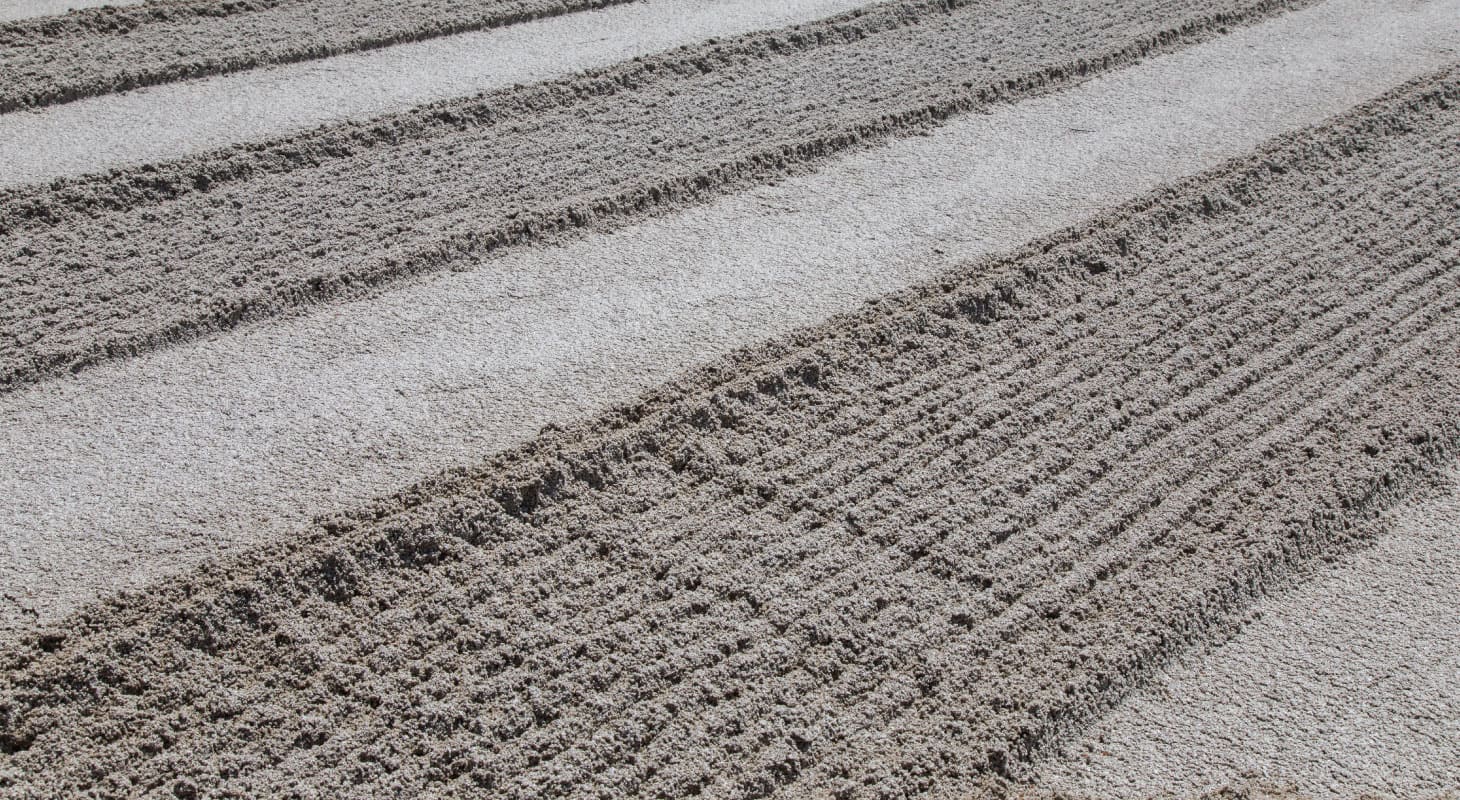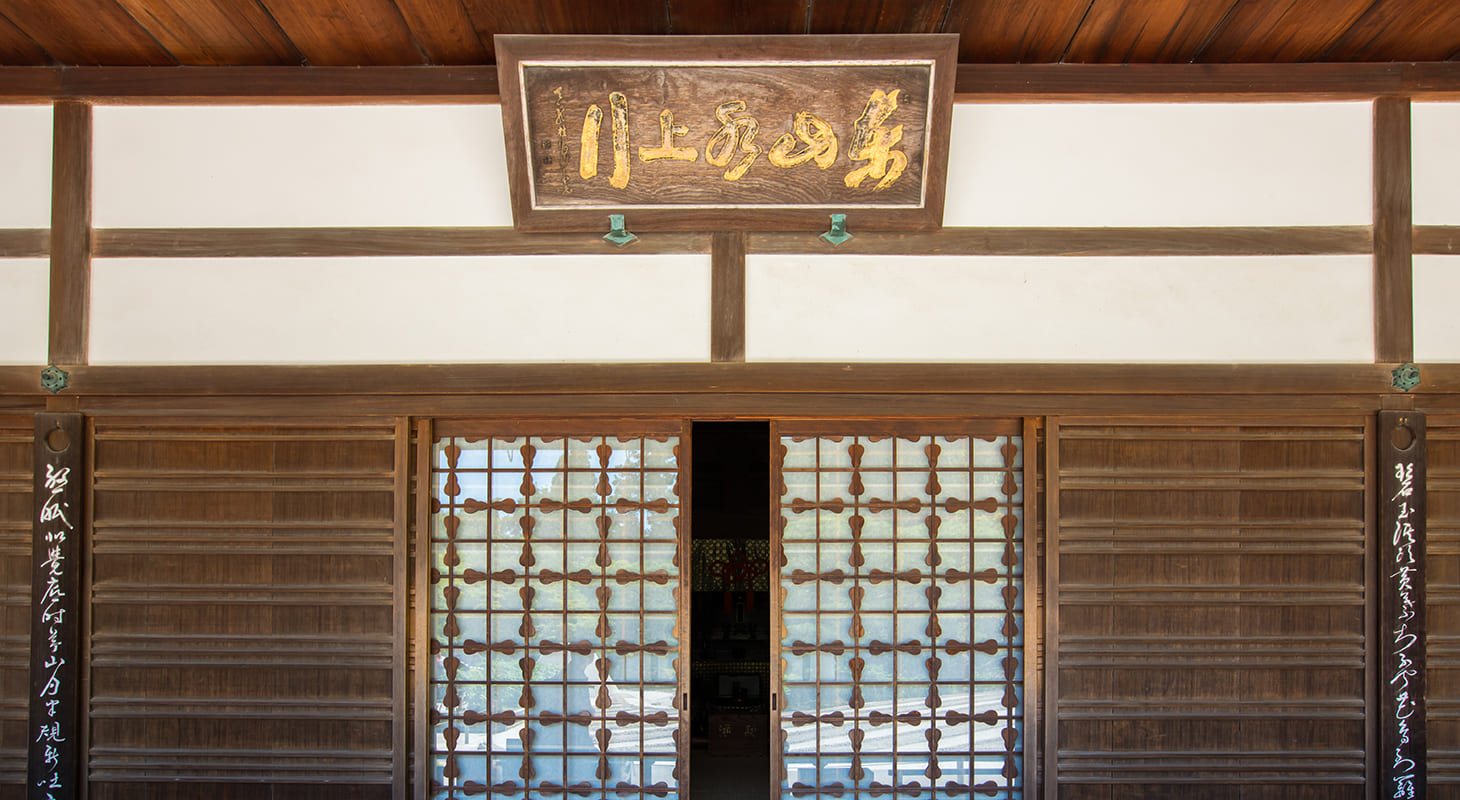ABOUT




Jisho-ji retains the aesthetic-seeking spirit of Yoshimasa.
Ginkaku-ji’s official name is Jisho-ji, an affiliate temple of Shokoku-ji Temple.
Ginkaku-ji (Silver Pavilion) was so named in the Edo Period in contrast with Kinkaku-ji (Gold Pavilion).
Ashikaga Yoshimasa, the 8th shogun of the Muromachi shogunate, originally built Ginkaku-ji as the Higashiyama-den palace. After Yoshimasa passed away, the palace became a Zen Rinzai School temple named after Yoshimasa’s posthumous Buddhist name of “Jisho-in.” Yoshimasa became the family head at age 9, and shogun at age 15. He spent his lifetime pursuing aesthetic beauty. His Higashiyama-den palace reflected the essence of Higashiyama culture of refined simplicity. Ginkaku-ji still retains the aesthetic-seeking spirit of Yoshimasa even 500 years later.
History
Ginkaku-ji’s Location
Ginkaku-ji, like Kinkaku-ji, is regarded as a branch temple of Shokoku-ji. Its official name is Tozan (Eastern Mountains) Jisho-ji. The gentle hills that range along the eastern edge of Kyoto are called Higashiyama (“eastern mountains”) and from ancient times have been regarded as possessing a feminine gentleness. The frequent subject of poetry, these mountains are a much appreciated part of the landscape of Kyoto. The peak called Nyoigatake (also known as Daimonjiyama) is well known as the site of the bonfire in the shape of the character dai (“great”) visible from the city on August 16, during the Bon festival. Ginkaku-ji is located in the foothills of Daimonjiyama. The “Philosopher’s Path,” named after a favorite stroll of the philosopher Nishida Kitaro (1870-1945) and a famous route for viewing cherry blossoms in spring and fireflies in summer, runs past its front gate.
This area has a long history. The environs of the Shirakawa River running through it have housed settlements since ancient times. Evidence of Jomon-period (ca. 10,000 BC to ca. 300 BC) sites and temples from the Nara period (710-94) have been discovered here. It has also been a favored site for temples, with the Honen-in and Reikan-ji in the east and Kurodani Konkaikomyo-ji and Shinnyodo in the south. During the Heian period (794-1185) it was, like Kitayama, a site of imperial tombs, crematories, and temples dedicated to the peaceful repose of the dead. In the mid-Heian period the temple Jodo-ji was built here. Later the Higashiyama palace, which eventually became Jisho-ji, was built on the temple site.
Before the Higashiyama Palace
Jodo-ji was a Tendai-sect temple. During the Heian period it was the residence of Enchin (814-89) and known as Jodo-ji. In the first decade of the eleventh century the twenty-fifth Tendai abbot Myokyu (the grandson of Emperor Daigo) rebuilt the temple, took up residence there, and was known as the Jodo-ji abbot.
Toward the end of the Heian period the practice of installing members of the imperial family as the heads of temples became firmly established and even the abbot of the head Tendai temple, Enryaku-ji, was selected from specific branch temples headed by priests of imperial lineage. These specially designated temples were known as monzeki (literally, “of a specific lineage”).
Early in the second decade of the thirteenth century the seventy-third Tendai abbot Enki, the head priest of the Enryakui-ji monzeki temple Kongoju-in, took up residence at Jodo-ji, which then came under the administration of Kongoju-in. Thereafter the head priest of Kongoju-in came to reside permanently at Jodo-ji, at which living quarters for the aristocratic abbot of the temple were built.
In the Muromachi period (1392-1573), Yoshimi (1439-91), the third son of the sixth Ashikaga shogun Yoshinori (1394-1441), was ordained at Jodo-ji and, adopting the name Yoshihiro, became the head priest of the temple. Later, however, he was called back to government by his older brother Yoshimasa and became Yoshimasa’s advisor and successor as shogun. This led to the Onin War, during which Jodo-ji was completely destroyed by fire. Yoshimasa built his Higashiyama villa on the former site of Jodo-ji.
Shogun Ashikaga Yoshimasa 1
Yoshimasa was born in 1436 to the sixth Ashikaga shogun Yoshinori and Shigeko, the daughter of the minister of the left Hino Shigemitsu. Shigeko’s younger male cousin Karasumaru Suketo was appointed the child’s guardian, and a talented young woman named Oima was chosen from among one of the families that traditionally supplied retainers to the shogun’s household to oversee his upbringing.
Yoshinori was a man of violent temper, quick to punish anyone who opposed his will. He was feared by all and came to be known as “the evil shogun.” Yoshinori revered the imperial family and increased the power of the shogunate by strictly enforcing the laws, suppressing powerful ministers, and eliminating governor generals who opposed him, but his severity stirred up strong resentment and he was assassinated by his general Akamatsu Mitsusuke (1381-1441) in 1441. Known as the Kakitsu Revolt after the era name, it was an example of lower-ranking military leaders overthrowing their superiors (gekotsujo) a phenomenon that was increasingly widespread during this period.
Shogun Ashikaga Yoshimasa 2
His heir Yoshikatsu (1434-43) succeeded to the post of shogun at the age of eight but died two years later, paving the way for the next shogun, Yoshimasa. Only eight years old, Yoshimasa was assisted by the governor general Hatakeyama Mochikuni (1398-1455). Unfortunately, Hatakeyama did not compare favorably in either character or ability with those who had assisted Yoshimitsu in his youth. Eventually the sixteen-year-old Hosokawa Katsumoto (1430-73) was pointed governor general, but he was far too young and inexperienced to successfully deal with the difficult problems facing Yoshimasa.
Like Yoshimitsu, Yoshimasa associated regularly with Zen monks, but he was more interested in cultural and artistic exchange than the demanding practice of zazen. Yoshimasa’s ministers and advisors were largely motivated by self-interest, and increasingly cared only for personal gain. At the same time his mother Shigeko and his father-in-law Ise Sadachika (1417-73) meddled in government affairs and began to wield increasing influence, leading to further disorder.
As the landlords of great estates passed their tax burdens on to the peasantry, farmers were pressed beyond endurance and eventually arose in revolt across the land. Yoshimasa’s attempts to deal with this problem were unsuccessful. Restoring the finances of the shogunate and pacifying the social unrest of the time were indeed daunting challenges.
Shogun Ashikaga Yoshimasa 3
Given these circumstances, Yoshimasa decided to withdraw from government. He had wed the sixteen-year-old Tomiko of the Hino clan in 1455, but she failed to bear a son, so in 1464 Yoshimasa called his younger brother Yoshimi, at that time residing at Jodo-ji under the name Jodoji-dono, back into government and lay life and made him his successor.
The following year, however, Tomiko gave birth to a son. He was named Yoshiki (1465-89), later Yoshihisa. Tomiko wished Yoshihisa to succeed as shogun, and called on Yamana Mochitoyo (also Sozen, 1404-1473) to support her cause. Partly because of Yamana’s long-standing personal antipathy for Yoshimi’s supporter Hosokawa Katsu, a military confrontation resulted. This was the start of the Onin War (1467-77), which turned the magnificent capital of Kyoto into a charred battlefield. Many temples, including Shokoku-ji and Jodo-ji, Yoshimi’s former residence, were destroyed in the fires accompanying the revolt.
Ginkaku-ji and Yoshimasa 1
After the Onin War, Yoshimasa decided to build a villa on the former site of Yoshimi’s residence, Jodo-ji, and he started on construction of the Higashiyama villa in 1482. When the Eternity Palace (Tsune no Gosho) was completed the following year, Yoshimasa passed the reins of government to his heir Yoshihisa and moved to his Higashiyama villa. In 1485, when the Zen practice hall Seishian was completed, Yoshimasa took the tonsure and the religious name Kizan Dokei. In 1486, the Togudo, Yoshimasa’s personal Buddha Hall (Jibutsudo) was completed, and the following year the Higashiyama Kaisho and Izumiden (also known as Roseitei) were finished. In March 1489 construction began on the Silver Pavilion (Ginkaku, officially the Kannon Hall), but in October Yoshimasa fell ill, and he died on January 7, 1490, without seeing the structure completed.
A number of Zen monks from Shokoku-ji advised and assisted Yoshimasa in realizing his designs for the Higashiyama palace. Among them were such leading figures of Gozan literature such as Zuikei Shuho, Unso Ikkei, Shinden Seihan, and Jikuun Toren. In his later years, Kisen Shusho, Osen Keisan, and others were of special help.
Ginkaku-ji and Yoshimasa 2
With Osen Keisan’s assistance, Yoshimasa turned to Saiho-ji (popularly called Kokedera, or the “Moss Temple”), which he especially admired, as a model for the Higashiyama palace. The Silver Pavilion itself, however, was modeled after the Golden Pavilion (Kinkaku, officially the Relics Hall) of Rokuon-ji (Kinkaku-ji), and in 1487 Yoshimasa paid an unannounced visit to Rokuon-ji to inspect the Relics Hall that his grandfather Yoshimitsu had built.
The garden of Higashiyama Palace is the only surviving garden whose design was overseen by Yoshimasa, and it displays his refined and elegant taste. Among Yoshimasa’s retainers and confidants were Zen monks from Shokoku-ji as well as superior masters of garden design who actually oversaw the work. Yoshimasa is said to have placed supreme trust and responsibility for constructing the garden in the Noh actor Zeami (1363-1443), who is known to have been in charge, at Yoshimasa’s command, of constructing the gardens at Inryoken, Myoren-ji, and the Muromachi Kamigosho palace, among others.
Higashiyama Culture
From the time of the first Ashikaga shogun Takauji, the Ashikaga shoguns displayed an intense interest in art collection and connoisseurship. Yoshimtsu in particular promoted trade with Ming China and acquired many works of art in the process. In fact, the majority of the great paintings, ceramics, and calligraphic works brought to Japan from China were carried back by Zen monks who had gone to China to study. Stored in the treasuries of the great Zen monasteries, most of these works were requisitioned by the Ashikaga shoguns and became the property of the shogunate. Yoshimasa engaged Noami (1397-1471), a doboshu, or professional connoisseur of art objects, and his son Geiami (1431-85) to attempt to examine and catalogue the shogunate’s collection held in the storehouses of Higashiyama palace. At the same time Yoshimasa ordered Noami to develop standards for the new shoin style of architecture that was emerging at this time, a project that was completed by the time of Noami’s grandson, Soami (1485?-1525). Noami also contributed to the development of the art of the tea ceremony (chanoyu), studying under one of its early formulators Murata Juko (also Shuko, 1422-1502), and recommended Juko to Yoshimasa.
Daimonji and Ginkaku-ji
Yoshihisa died in battle in 1489 at the age of twenty-four. Yoshimasa, grieving for his son, wished to offer prayers for the repose of his spirit, and at the suggestion of Osen Keisan instructed his retainer Haga Kamon no Kami to form the character dai (“great”) out of white cloth on the slope of Nyoigatake during the Bon celebration for the dead that year. Looking at the mountain from Togudo, Osen Keisan charted the outlines of the character and had a fire ditch dug into the mountain in the appropriate shape. On August 16, the ditches, filled with pine kindling, were lit simultaneously to send Yoshihisa’s spirit on its way. This is the origin of the custom of the bonfire in the shape of the character dai (Daimonji no okuribi) that lights up the evening sky in Kyoto every August 16 to this day.
Establishment as a Temple
After Yoshimasa’s death in 1490 and in accordance with his final wishes, the Higashiyama villa was converted into a Zen temple with Muso Soseki as its honorary founder. The temple was named Jisho-in after Yoshimasa’s posthumous name Jishoindono; the following year the name was revised to Jisho-ji.
The first abbot of the temple was Hosho Shuzai (d. 1522). The second abbot, Isan Shuka, was the younger brother of Yoshimi’s second son, the Ashikaga shogun Yoshitane (1466-1563), and was fifteen when he became the abbot. The abbots of following generations survived the vicissitudes of the Warring Countries period (1482-1558) and successfully protected the Silver Pavilion (Kannon Hall) and the Togudo.
Destruction and Reconstruction
In 1550, toward the end of the Muromachi shogunate, a battle took place between Miyoshi Chokei (also Nagayoshi, 1522-64) and the fifteenth Ashikaga shogun Yoshiteru (1536-65) in the vicinity of Jisho-ji. With the exception of the Silver Pavilion and Togudo, all the buildings on the grounds were destroyed by fire. In addition, when Oda Nobunaga (1534-82) built Nijo Castle for Yoshiteru he removed the famous stones Kuzan Hakkaiseki (“Stones of the Nine Mountains and Eight Seas) from the garden at Jisho-ji. The temple fell into a dilapidated state as the Muromachi shogunate declined. In 1615, at the beginning of the Edo period (1615-1868), Miyagi Tamba no Kami Toyomori carried out a large-scale restoration of the temple, creating in large part the present Ginkaku-ji. Though it was originally built as a residence for the shogun, the buildings and gardens were redesigned in a style suitable for a Zen temple with this restoration.
